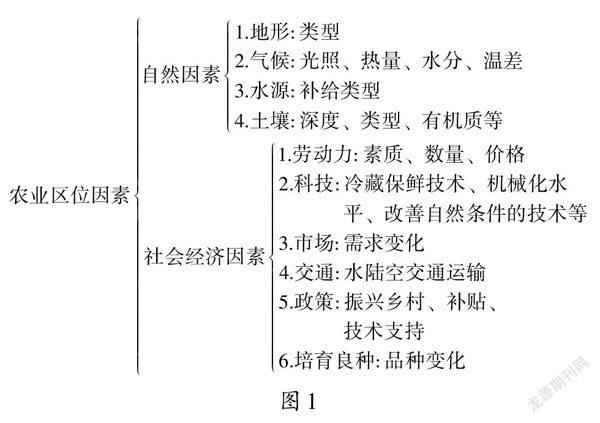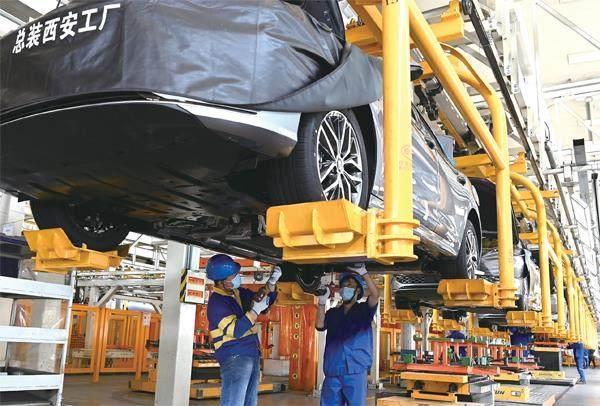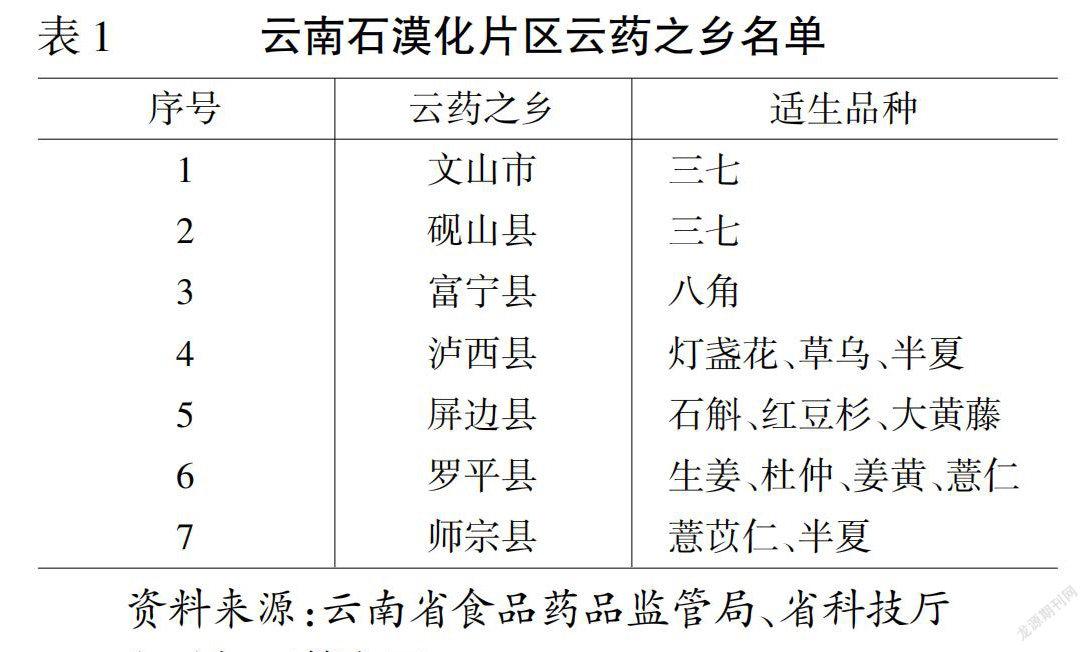【www.zhangdahai.com--其他范文】
Wenbin Bi,Fang Yu,Ning Caoand Russell Higgs
1School of Computer and Software,Dalian Neusoft University of Information,Dalian,116023,China
2School of Information Engineering,Qingdao Bin Hai University,Qingdao,China
3School of Internet of Things and Software Technology,Wuxi Vocational College of Science and Technology,Wuxi,214028, China
4School of Mathematics and Statistics,University College Dublin,Dublin,Ireland
Abstract:Load-time series data in mobile cloud computing of Internet of Vehicles(IoV)usually have linear and nonlinear composite characteristics.In order to accurately describe the dynamic change trend of such loads,this study designs a load prediction method by using the resource scheduling model for mobile cloud computing of IoV.Firstly,a chaotic analysis algorithm is implemented to process the load-time series,while some learning samples of load prediction are constructed.Secondly,a support vector machine (SVM)is used to establish a load prediction model,and an improved artificial bee colony (IABC) function is designed to enhance the learning ability of the SVM.Finally,a CloudSim simulation platform is created to select the perminute CPU load history data in the mobile cloud computing system,which is composed of 50 vehicles as the data set;and a comparison experiment is conducted by using a grey model,a back propagation neural network,a radial basis function (RBF) neural network and a RBF kernel function of SVM.As shown in the experimental results,the prediction accuracy of the method proposed in this study is significantly higher than other models,with a significantly reduced real-time prediction error for resource loading in mobile cloud environments.Compared with single-prediction models,the prediction method proposed can build up multidimensional time series in capturing complex load time series,fit and describe the load change trends,approximate the load time variability more precisely,and deliver strong generalization ability to load prediction models for mobile cloud computing resources.
Keywords:Internet of Vehicles mobile cloud computing;resource load predicting;multi distributed resource computing scheduling;chaos analysis algorithm;improved artificial bee colony function
In the IoV,smart vehicles have to collect,process and transmit a so huge scale of information in real time that it is very difficult to completely rely on the vehicles themselves to meet all data requirements.In addition,people’s needs for multimedia on their trips are increasing day by day.As a result,such services as music and videos are also taking up a large amount of communication,computing and storage resources of vehicles,while putting forward higher requirements on real-time performance.However,mobile cloud computing technology has brought effective solutions to the IoV.With the development of the IoV business,an increasingly massive number of operations are required,leading to heavy computing workloads.IoV clouds combined with mobile cloud computing will become an effective approach to solving such problems[1,2].As a mobile cloud computing paradigm,the vehicle cloud network regards the on-board terminal mounted in a vehicle on road as a resource unit and integrates the computing and storage capabilities on the vehicle side,in combination with vehicle-to-vehicle communication(V2V).The vehicle cloud network based on mobile cloud computing can effectively utilize vehicle resources to provide low-latency cloud services,while improving the dynamic accessibility of resources[3].However,due to the limited scope and scale of the vehicle cloud network,how to efficiently manage and allocate resources becomes a major problem with such networks.There are three types of IoV resources:communication resources,computing resources and storage resources[4].
Resource load prediction of IoV mobile cloud computing is the basis of resource scheduling[5-7].Most resource load models of IoV mobile cloud computing rely on time series data[8-10].Generally[11],they regard the IoV mobile cloud computing resource loads at different times as a time series,and then fit the relationships between the IoV mobile cloud computing resource load-time series data by using certain modeling methods,so as to find out the changing characteristics of IoV mobile cloud computing resource load and predict the future trends of such loads[12,13].At present,the modeling methods in this respect mainly include neural networks,grey models[14]and so on.However,grey models can only predict the rising or falling trends of resource loads in IoV mobile cloud computing,and such loads are related to many factors,while showcasing strong time-varying characteristics[15].Nevertheless,the neural network has some defects,such as slow convergence speed,over-fitting and so on[16].The construction of learning samples for such loads is a key step in the modeling process.At present,the chaos of time series is not well considered in the prediction of such loads,with low prediction accuracy of their change trends[17].
The load-time series data of mobile cloud computing of IoV usually demonstrate the linear and nonlinear composite characteristics,and the existing models cannot accurately describe the dynamic change trends of loads[18].This study proposes a SVM-based method for mobile cloud computing resource load prediction.Firstly,a chaotic analysis algorithm is used to process the load time series of mobile cloud computing resources,and a learning sample for mobile cloud computing resource load prediction is constructed.Then,SVM is used to build up a load prediction model for mobile cloud computing resources,while an IABC function is designed to improve the learning ability of SVM.Finally,cloud computing resource load prediction experiments are conducted to verify the performance of the proposed method compared with other models.
2.1 Mobile Cloud Computing Resource Scheduling Model for Internet of Vehicles
In the existing mobile edge computing resource unloading strategies,more consideration is given to the unloading of a single mobile cloud computing resource.Different kinds of computing resources are not considered,which is easy to lead to low energy consumption optimization[19].According to the actual characteristics of mobile cloud computing resources under the IoV,this study proposes a computing scheduling model based on multi distributed resources.The model includes three cases:the task is not unloaded,the task is unloaded to other vehicles in the vehicle cloud network,and the task is unloaded to the traditional cloud server.
2.1.1 Task Without Unloading

Tedgeis the processing time of the task at the edge of the IoV,liis the task load of i,and fedgeis the processing speed of the task at the edge of the IoV.

Eedgeis the execution energy consumption and Pedgeis the execution power.
2.1.2 Task is Unloaded to Other Vehicles

Eecis the energy consumption level during the unloading of task Ti to other vehicles in the vehicle cloud network,Ptris the transmission data power,Preis the reception data power,Pidleis the idle power,R1and R2are the data transmission rate and reception rate,Cjand Djare the transmission size and reception size of task data respectively,and Tecis the task execution time.

ljis the task load of j and fecis the running speed of other vehicles.
2.1.3 Task is Uniloaded to Traditional Cloud Server

Ckand dkare the data transmission and reception speeds during task execution.
2.2 Fitness Algorithm of Mobile Cloud Computing Resource Scheduling Model for Internet of Vehicles
The execution time and cost of task scheduling were evaluated by fitness.The greater the fitness,the higher the energy consumption of the scheduling scheme.On the contrary,the smaller the fitness,the lower the energy consumption[20].
2.2.1 Algorithm Fitness


fitnessis the energy consumption fitness,Esumis the total energy consumption,TsumandTreponseare the total task execution timeand task response time.f 1is the response speed andf 2is the execution speed.The algorithm flow chart is shown in Fig.1 below.
2.2.2 Algorithm Flow

Figure 1:Algorithm flow diagram
The flow chart is described below.
1.Randomly initialize the task scheduling schemeSi,unloading decisiondiand search speedVi.
2.Calculate the energy consumption and execution time of the scheduling schemeSiunloaded to the three resources.
3.Calculate the total energy consumption,total execution time and fitness value of the scheduling scheme.
4.The optimal scheduling scheme is selected according to the fitness value,and the scheme with the lowest fitness is regarded as the global optimal scheduling scheme.
5.Update the scheduling scheme according to the search speed and provide the unloading decision of each task.Update the search speed of the scheduling scheme according to the inertia weight strategy.When the set number of iterations D is reached,the energy consumption optimal scheduling schemeSenergy-bestunder the response time constraint is obtained.
6.Calculate the energy consumption and time of unloading the scheduling schemeSito three resources.
7.Calculate the total energy consumption,time and fitness of the dispatching scheme.
8.The scheme with the lowest fitness value is selected as the global optimal scheme.
9.Update the search speed of the scheduling scheme.When the set number of iterations D is reached,the energy consumption optimization scheduling schemeSenergy-bestis output.
2.3 Artificial Bee Colony Algorithm(ABC Algorithm)
Artificial bee colony(ABC)algorithm consists of food sources,employed bees and unemployed bees.The bees were divided into three groups:employed bees,onlookers and scouts.Employed bees and unemployed bees accounted for half of the total number of bees,and the path planning process was divided into search process and optimization process[21].
2.3.1 Search Process
Food point xi(i ∈1,2,···,SN) represents a viable solution.All positions xi(i ∈1,2,···,SN)have parameters D(xij,j ∈1,2,···,D)to be optimized.Food point initialization is defined as follows.

In the equation,ljand ujare the lower and upper limits of parameter j,rand(0,1)is the uniform random number between 0 and 1,and Snis the number of food sources.
2.3.2 Optimization Process

(1)Employed bees stage:Each employed bee corresponds to the food location.The employed bees conduct a local search near their current food location to find a new food location.The calculation equation is:(2) Onlookers stage:After the employed bees deliver the honey to the hive,they invite the onlookers to fly with them to the food source.Whether the onlookers accept the invitation is mainly related to the quality of food source that the employed bees depend on.The onlookers determined the selection probability of food source by roulette according to Eq.(11)according to the income degree of food source.

In Eq.(11),piis the probability of scouts to choose food source,and fitiis the income degree of food source.Once the onlookers have selected a food location,they generate a new food location using Eq.(10),evaluate the new food location and apply the same greedy choice.
(3)Scouts stage:A more optimized solution in the solution space is sought by enlarging the search area.If the food location is not improved after repeated experiments,the leading bees will become scouts and randomly generate new food spots through Eq.(9),and then search for new food sources according to Eq.(11).
(4) Optimal food source determination stage:After the above several stages,the optimal food source is obtained by judging whether the termination condition is satisfied.The employed bees and scouts are used for local and global search respectively,while the onlookers are used for the balance between them.Finally,the optimal solution is found through multiple iterations and cyclic updates in three stages.
2.4 Improved Artificial Bee Colony(IABC Algorithm)
The adjustment of trigonometric function is introduced into Eq.(10),which makes ABC algorithm perform better in both local search and global search.At the same time,in order to improve the search accuracy,the new bee individual takes itself as the origin and searches within the maximum radius from itself to the optimal bee of this subgroup.

In Eq.(12):t = 1,2,···,G,G is the fixed number of evolutionary iterations,and rmaxis the maximum radius of the field of the bee individual with the best global fitness.
It can be seen from Eq.(11)that the greater the income of food source,the greater the probability of being selected by onlookers,and the more onlookers around it.However,with the increase of calculation times,the population diversity will decrease.To solve this problem,when determining the probability of food source selection,N onlookers chose food source by roulette,and N onlookers chose food source by Eq.(13),so that the food source with lower income could also be selected and the diversity of the population could be increased.

In Eq.(13),δ is the parameter in the improved algorithm.It can be seen that the probability value of food source being selected is inversely proportional to the income degree,and it decreases with the increase of the income degree.
ABC algorithm,like other evolutionary algorithms,has the defect of falling into local optimal solution prematurely,but it can jump out of local optimal solution by increasing population diversity.In the onlooker stage,the reverse evolution operator as shown in Eq.(13) is added to make the population evolve in two directions.The existence of roulette ensures that the food source with the best income in each generation is retained.The existence of Eq.(13)preserves food sources with low income,ensures the diversity of population,improves the global search ability and convergence speed of the algorithm,and can better solve the problem of dynamic target allocation.
2.5 Cross-Correlation(C-C)Algorithm


3.1 Resource Load Forecasting Framework for Internet of Vehicles Mobile Cloud Computing
The processing flow of this framework is shown below.
1.Collect time series data of resource load of 1 Internet of vehicles mobile cloud computing.
2.The C-C method is used to determine the optimal m and t of the time series of the mobile cloud computing resource load of the IoV.
3.Build a multi-dimensional time series according to the optimal m and t,which is the learning sample of resource load prediction modeling of IoV mobile cloud computing.
4.The training samples of the resource load of IoV mobile cloud computing are used for learning,and the resource load prediction model of IoV mobile cloud computing is established.For one example,see Fig.2 below.

Figure 2:Resource load forecasting framework of IoV mobile cloud computing based on C-C and IABC
3.2 Load Forecasting Method under Mobile Cloud Computing Resource Scheduling Model of Internet of Vehicles
The load prediction process under the resource scheduling model of mobile cloud computing in the IoV refers to the genetic algorithm and is divided into two stages.The inner layer is the forecasting stage and the outer layer is the scheduling stage.The fitness function of the inner layer is the energy consumption cost of each resource.After the initial population is generated,the energy consumption allocation of the next generation of resources is generated.Each generation produces a new population through excellent individual selection,individual crossover and variation.The population evolves until it reaches the termination condition of the number of iterations.The goal of the whole process is to find the resource allocation that optimizes the energy consumption cost under the corresponding task resource allocation condition.The fitness function of the outer layer is the global relaxation time under each task resource allocation.After the initial population is generated,the next generation task resource allocation is generated.Each generation also produces new populations through excellent individual selection,individual crossover and variation.The population evolves until it reaches the termination condition of the number of iterations.The goal of the whole process is to find the computational cost under the task resource allocation and the corresponding optimal allocation of resource energy consumption.For one example,see Fig.3 below.
4.1 Performance Experiment of IoV Mobile Cloud Computing Resource Load Prediction Framework
4.1.1 Experimental Data
In order to test the performance of the resource load prediction model of IoV mobile cloud computing proposed in this study,the simulation of virtual resource scheduling is carried out by using CloudSim simulation platform.We increase the usage of CPU,memory and network bandwidth by using a surge in traffic.We chose the CPU load history data per minute in a mobile cloud computing system consisting of 50 vehicles as the research object.At present,there are two methods to judge and analyze the chaos of time series:quantitative analysis and qualitative analysis.In this study,the Lyapunov exponent method in qualitative analysis is used to analyze the chaotic characteristics of mobile cloud computing resource load data.The specific steps are as follows:
(1) Fourier transform is used to process the mobile cloud computing resource load data,and calculate the average track period T of the mobile cloud computing resource load data of the Internet of vehicles.
(2)The C-C method is used to determine the optimal m and T of the IoV mobile cloud computing resource load data,and the reconstructed multi-dimensional time series y of the IoV mobile cloud computing resource load is obtained Yj,j=1,2,···,M.
(3)Calculate the distance between the i-th discrete time of each point Yjand the adjacent point.

Figure 3:Load forecasting process under the resource scheduling model of IoV mobile cloud computing

(4)Calculate the average of all dj(i).

q represents the number of ln dj(i)0.
According to the above steps,the Lyapunov exponent is 0.0995 >0,which indicates that the historical data of the resource load of mobile cloud computing in the Internet of vehicles has chaotic performance.According to the C-C method,the best t=7 and the best tw=12 of the historical data of the resource load of the IoV mobile cloud computing are determined,and then the best embedding dimension m = 3 is obtained according to twand t.t = 7 and m = 3 are used to construct the load learning sample of IoV mobile cloud computing resources.
4.1.2 Results and Analysis
(1) Single step prediction results of the resource load prediction model for IoV mobile cloud computing
Select the last 100 data points in the network of vehicles mobile cloud computing resource load as the test samples,and other data points as the training samples of the network of vehicles mobile cloud computing resource load prediction model for learning,build the network of vehicles mobile cloud computing resource load prediction model,and conduct one-step prediction on the test samples to obtain the one-step prediction results of the network of vehicles mobile cloud computing resource load,see Fig.4 below.

Figure 4:Single step prediction results
Through the analysis of the resource load prediction results of IoV mobile cloud computing,it can be found that the addition of support vector machine method can effectively track the change trend of IoV mobile cloud computing resource load,and obtain high-precision IoV mobile cloud computing resource load prediction results.
(2) Multi step prediction results of resource load prediction model for IoV mobile cloud computing
The prediction of the resource load of the mobile cloud computing of the IoV is mainly to analyze the change trend of the resource load of the mobile cloud computing of the IoV in the future.The single-step prediction results can only describe the resource load of the mobile cloud computing of the IoV in the next moment.Therefore,it is necessary to carry out the multi-step prediction of the resource load of the mobile cloud computing of the IoV.The resource load prediction results of IoV mobile cloud computing three steps in advance are shown in Fig.5.
As can be seen from Fig.5,the multi-step resource load prediction results of Internet of vehicles mobile cloud computing are significantly worse than the single-step resource load prediction results of IoV mobile cloud computing.However,this model can still better describe the change trend of IoV mobile cloud computing resource load.The prediction results have a certain reference value for IoV mobile cloud computing resource load management.
(3) Comparative experiment on resource load prediction performance of IoV mobile cloud computing with other models.

Figure 5:Multi step prediction results
In order to test the superiority of the method in this study,the grey model,back propagation(BP)neural network,radial basis function(RBF)neural network and SVM with RBF kernel function are selected for the comparative experiment of resource load prediction of mobile cloud computing in vehicle networking,The load prediction accuracy of IoV mobile cloud computing resources is counted,and the results are shown in Fig.6.

Figure 6:Comparison of resource load prediction performance of IoV mobile cloud computing
By comparing and analyzing the load prediction accuracy of IoV mobile cloud computing resources in Tab.1,it is found that when multi-step IoV mobile cloud computing resource load prediction is carried out,the prediction accuracy of this model is the highest,which better overcomes the defects of other IoV mobile cloud computing resource load prediction models.

Table 1:Prediction model parameters
4.2 Experiment of Load Forecasting Method Under the Resource Scheduling Model of Mobile Cloud Computing in the IoV
4.2.1 Evaluation Criterion
Considering the linear and nonlinear characteristics of load time series data,this paper proposes an error correction combined prediction model,which better reflects the change trend of load time series with time.The prediction results were evaluated by mean absolute error(MAE),mean absolute value percentage error(MAPE),mean squared error(MSE),root mean squared error(RMSE),and R-squared(R2).

4.2.2 Experimental Results and Analysis
In order to verify the effectiveness of the proposed load forecasting model of Internet of vehicles mobile cloud computing resources,the above simulation data are used to verify the load forecasting method under the Internet of vehicles mobile cloud computing resource scheduling model proposed in this paper.In order to test and evaluate the performance of the load forecasting method under the Internet of vehicles mobile cloud computing resource scheduling model proposed in this paper,it is also compared with the single algorithm of ARIMA,BP,SVM[22,23]and LSTM[24-26].At the same time,it is also compared with the ARIMA-ANN(A-ANN)combined forecasting model proposed in literature[27-29],[30-32].Use the data of the past hour to predict the data of the next 5 min.Based on experience and comparison with many experiments,the relevant parameters of the single-step load forecasting model are set as follows,see Tab.1.
The measured workload value of 10 days is selected from the data set.By analyzing the load data,the weights of CPU utilization and memory utilization are set to 0.4 and 0.6 respectively,with a total of 2880 data records.The first 70% of the data are selected as the training set,20% of the data are selected as the one-step test set,and the remaining data are used to verify the generalization ability of the model,see Fig.7.

Figure 7:Prediction performance comparison
From the Fig.7,the trend of all algorithms is basically the same as that of the original sequence,but the prediction accuracy of the single load prediction model is obviously lower than that of the combined prediction model.The load forecasting model proposed in this paper has higher accuracy than the traditional load forecasting model.
The mobile cloud computing resource load prediction of the IoV mainly analyzes the change trend of the mobile cloud computing resource load in the future.The one-step prediction results can only describe the load in the cluster at the next moment.In order to further verify the generalization ability of the proposed model,the original resource load sequence is calculated every 6 points to construct the IoV mobile cloud computing resource load data with an average interval of 30 min.Similarly,the IoV mobile cloud computing load data with an interval of 60 min is constructed.For the prediction results of 30 min and 60 min intervals,the detailed error analysis is shown in Fig.8.
It can be observed from the prediction results that the method proposed in this study can accurately predict the load value of mobile cloud computing resources in the IoV in different time intervals.Although the prediction result of multi-step mobile cloud computing resource loads is outperformed by that of single-step mobile cloud computing resource loads,with increasingly more load samples,the original time series is analyzed and reconstructed to create a multi-dimensional time series,which can better reflect the load change characteristics of mobile cloud computing resources.The IABC function is introduced to construct a support vector machine,which can overcome the disadvantages of the existing support vector machines,extract the hidden features of the whole sequence,refine the approximation of the load time-variability of mobile cloud computing resources,and deliver a stronger generalization ability for the new load prediction model.

Figure 8:Prediction performance at different time intervals
Aiming at addressing the chaos of complex and changeable load sequences of mobile cloud computing of IoV,while considering the influence of energy consumption optimization,this study proposes a SVM-based load prediction method for mobile cloud computing resources of IoV under multi-distributed resource computing scheduling.In this method,the chaos theory is introduced to analyze and reconstruct the original time series,and a multi-dimensional time series is also created to better showcase the load change characteristics of mobile cloud computing resources in the IoV.Since the SVM has good generalization abilities,an IABC function is introduced to build up the SVM,which can approach the load time variability of mobile cloud computing resources in the IoV in a more precise manner.The single-and multi-step prediction simulation results show that the prediction accuracy of the model proposed in this study can reach 94.87%,only lower than the 95.85%accuracy of the grey model.When it comes to prediction of the load of mobile cloud computing resources in the IoV,the prediction accuracy of the model of this study reaches 89.18%,which can effectively track the load variation of such resources.The experimental results show that the proposed method can provide good prediction accuracy,while significantly reducing the real-time prediction error of resource load in the mobile cloud environment of the IoV.In the follow-up research,more consideration shall be given to such constraints as dynamic changes in users’time and energy weight allocations according to actual individual situations and other disturbances,and more experimental samples shall be used to verify the rationality of the algorithm of this study.
Funding Statement:This work was supported by Shandong medical and health science and technology development plan project(No.202012070393).
Conflicts of Interest:The authors declare that they have no conflicts of interest to report regarding the present study.
推荐访问:Prediction INTERNET Resource
本文来源:http://www.zhangdahai.com/shiyongfanwen/qitafanwen/2023/0603/606714.html




